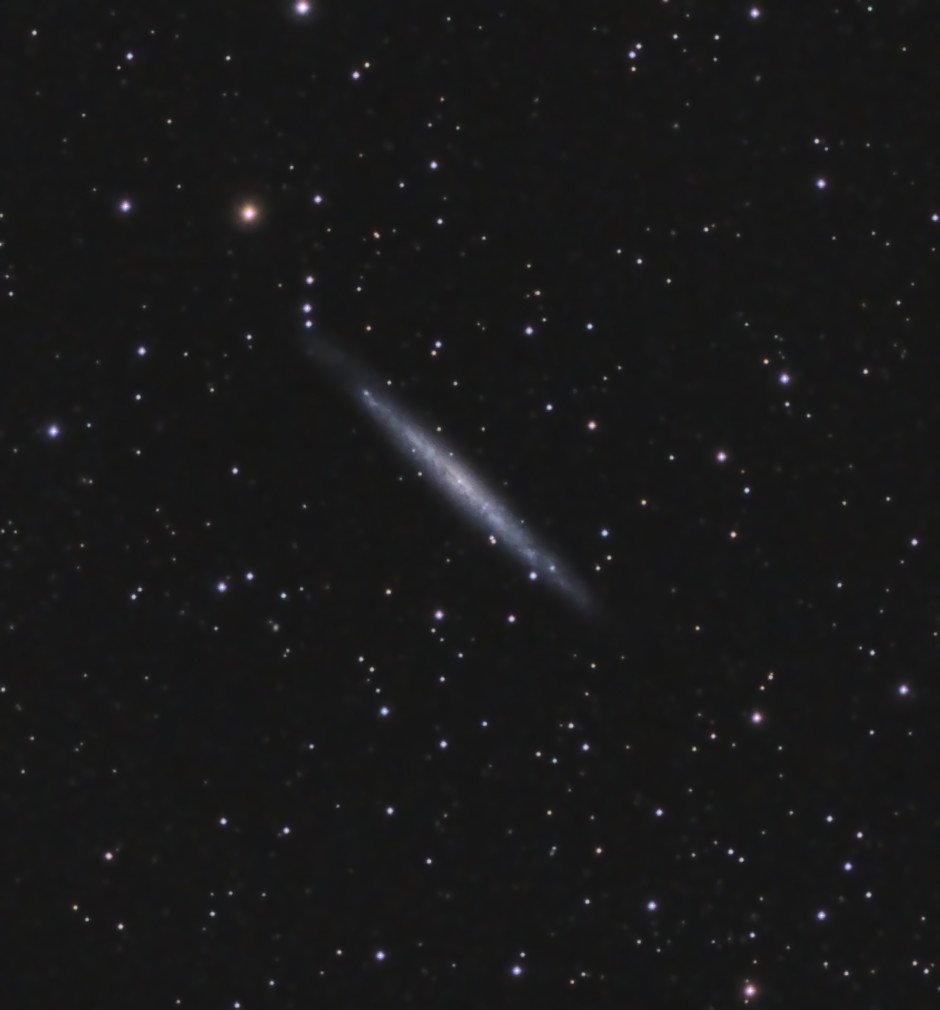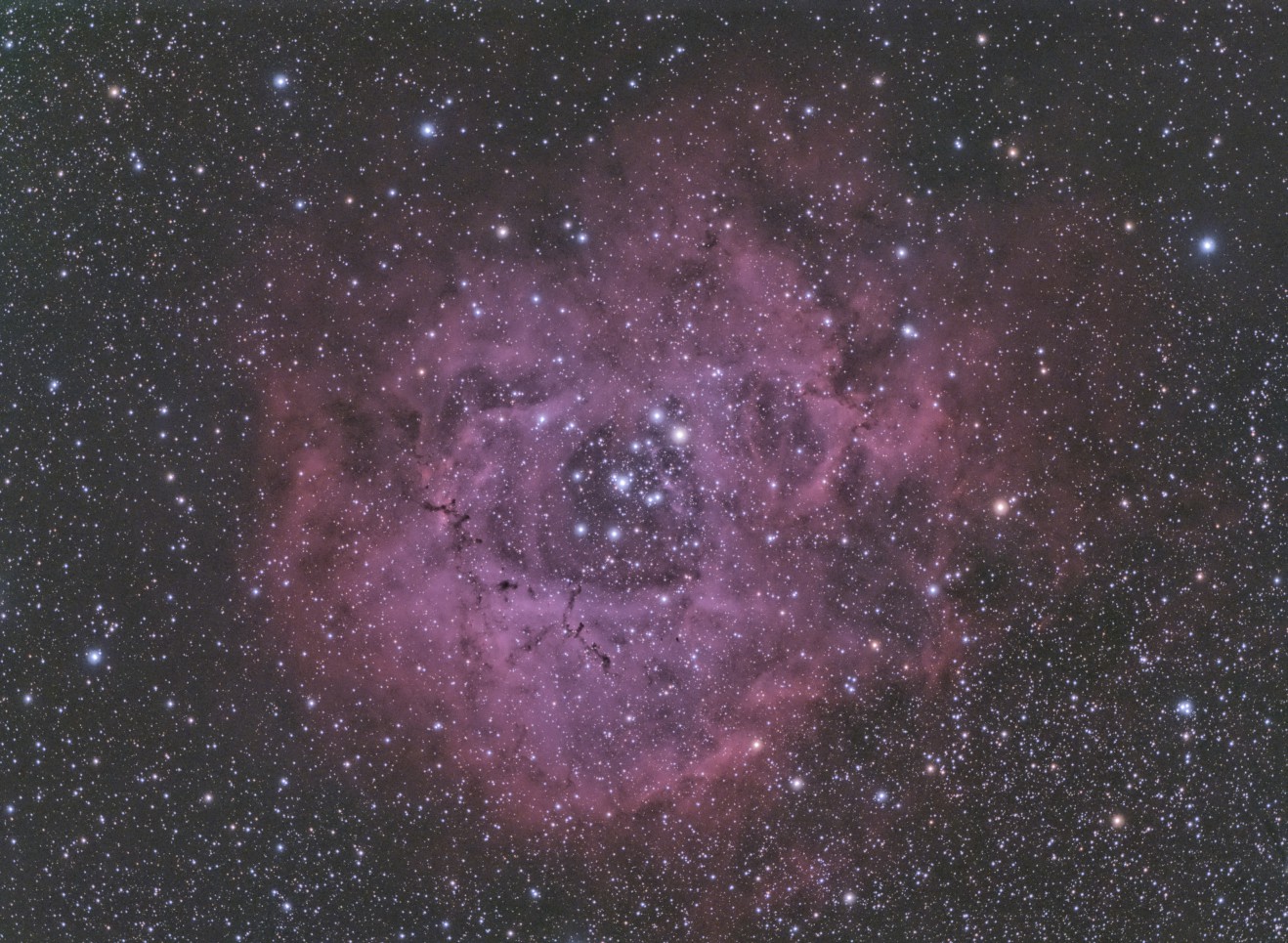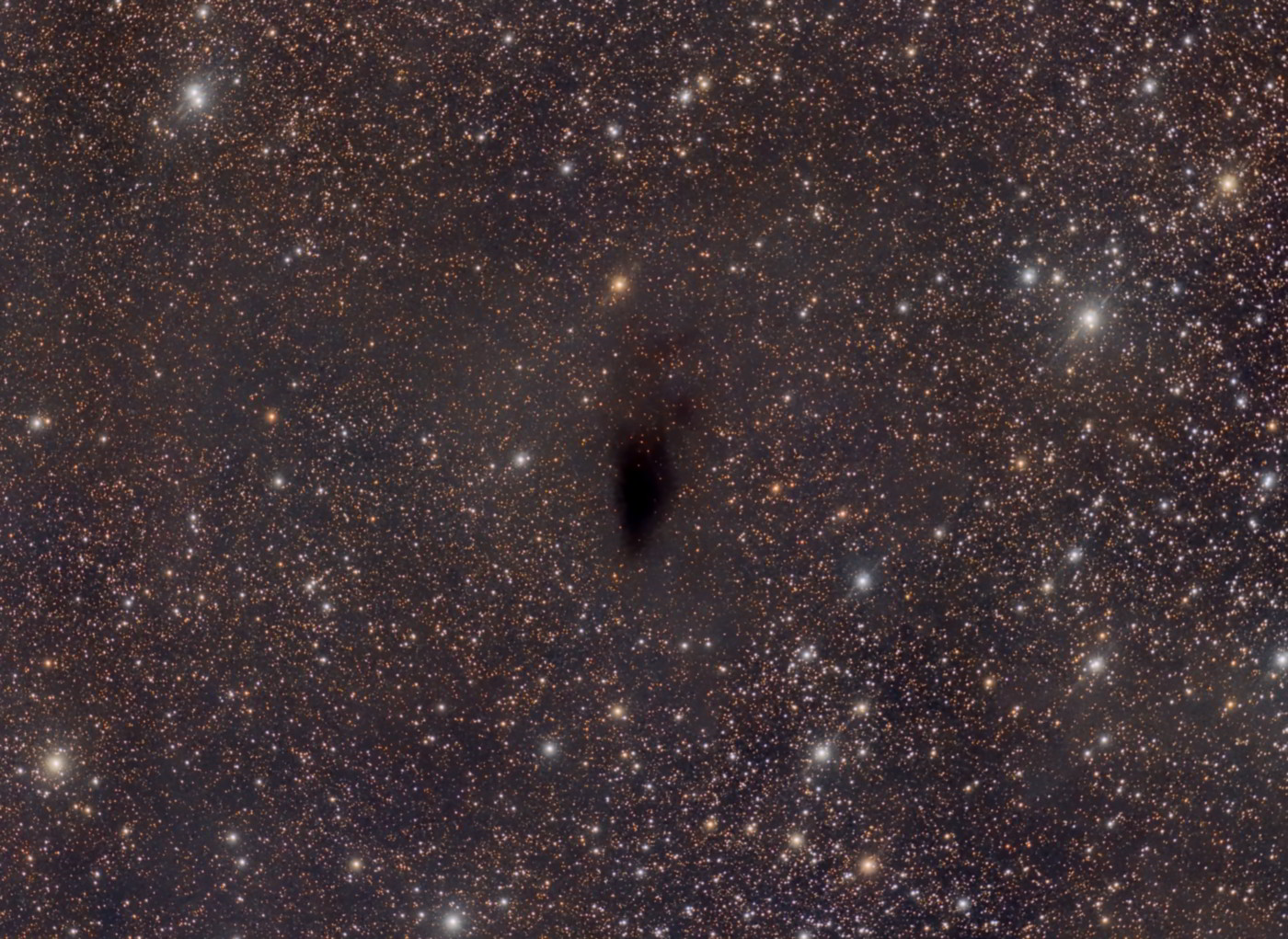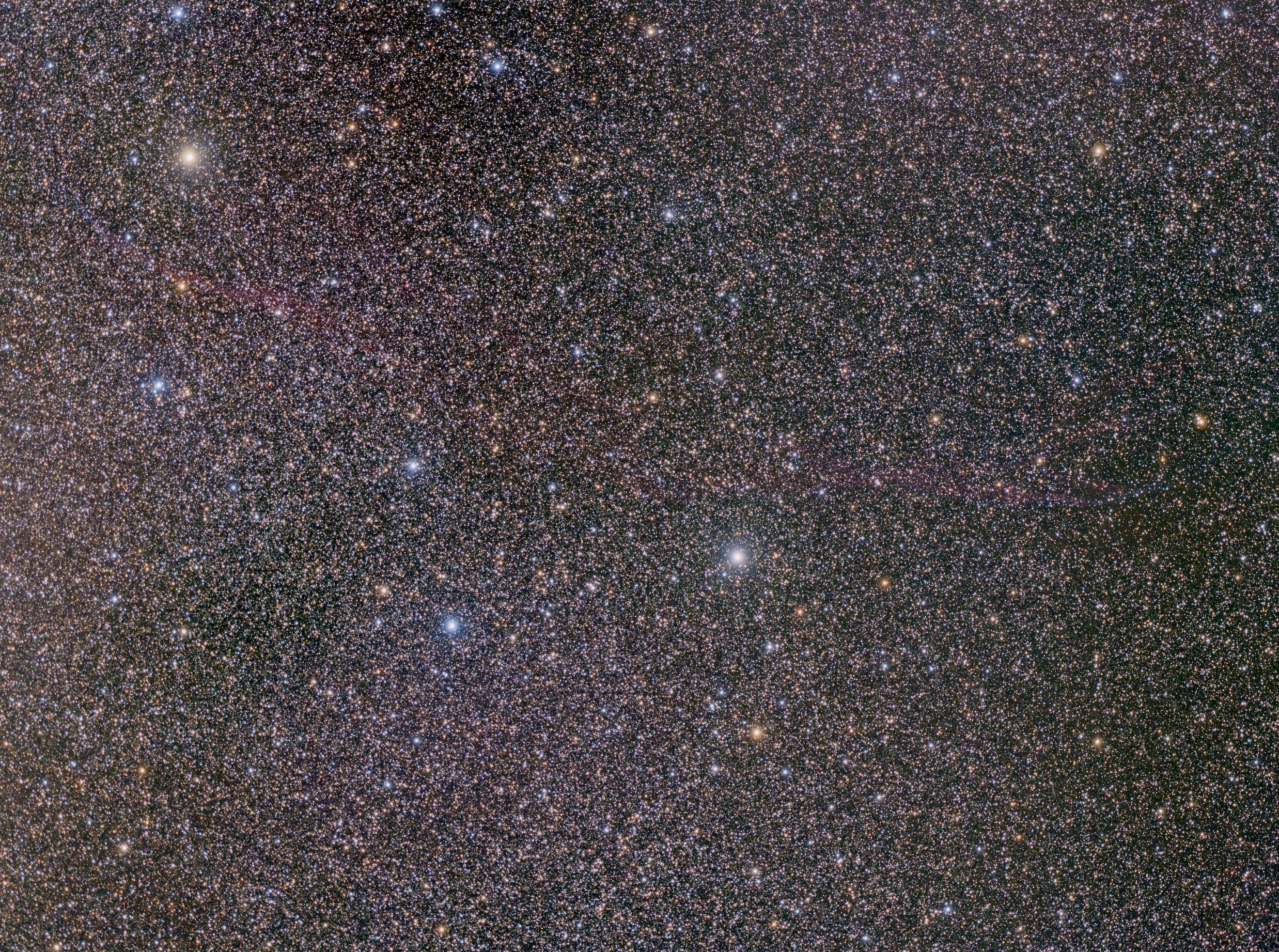This has been my longest imaging project to date coming in at over 17 hours of RGB data in 10 and 20 minute subframes. The reason for this has been the very faint nature of the target against the light pollution here. To reduce the noise to acceptable values it’s been necessary to acquire rather more images. Contrasted with the pristine skies of Tivoli, Namibia it’s bought home the difficulties and additional work required to successfully target faint objects from UK skies.
Category: Deep Sky
I acquired the data for this object some time ago and I’ve been struggling with the processing ever since. The real challenge has been the extreme difference in brightness between the inner core of the galaxy and the outer diffuse halo. After some help from the PixInsight forum this is the current state of processing.
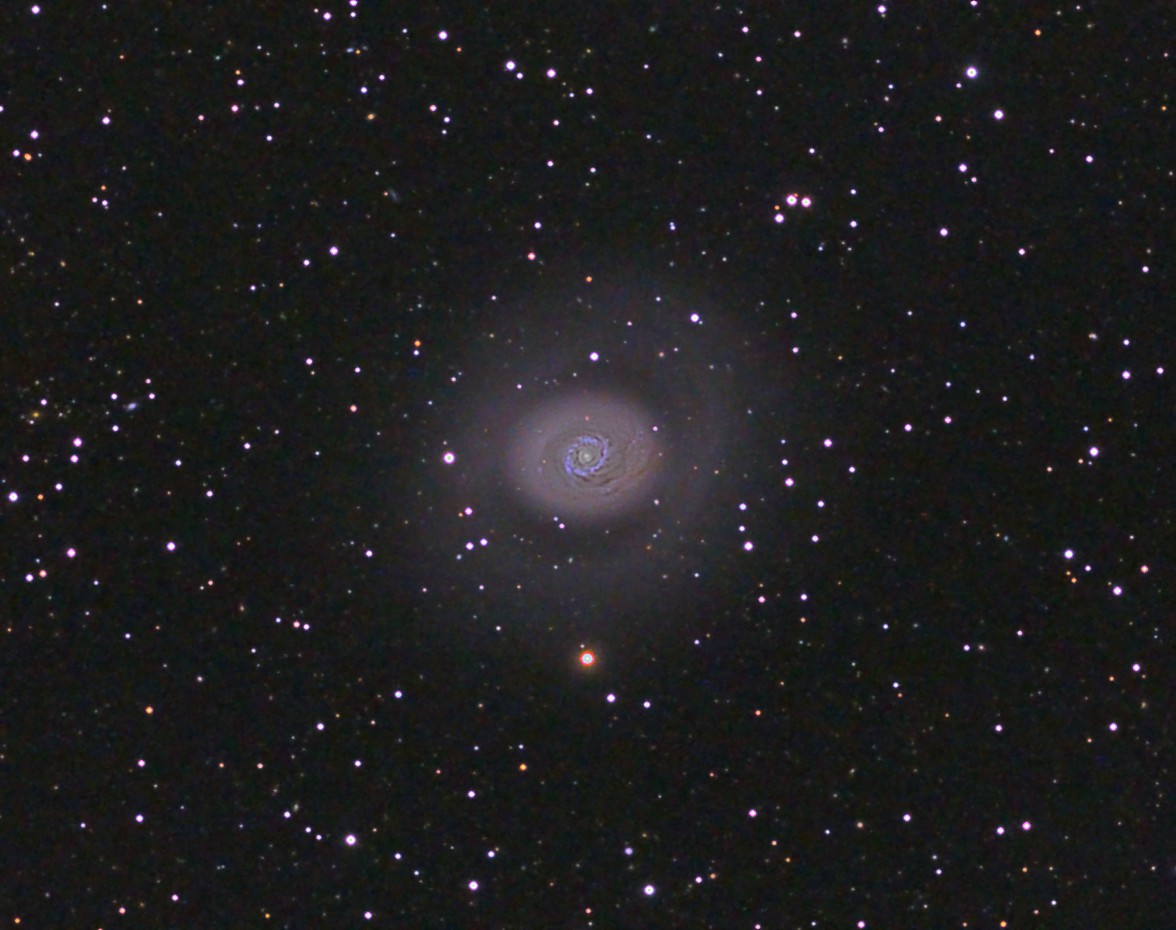 I’m not totally satisfied with this yet as the brighter stars have been damaged and I’ll need to go back and make another attempt when I get time.
I’m not totally satisfied with this yet as the brighter stars have been damaged and I’ll need to go back and make another attempt when I get time.
I’ve had a longer term project running for a while to image Abell 31. As this object is in Cancer it’s now too late in the year to accumulate further sub-frames so I’m going to have to make do with what I have. Altogether though, this now amounts to about 20 hours so I’ll have to knuckle down and process a final result. In the meantime, I’ve been messing with some brighter objects and this is one, NGC 4244 in Canes Venatici. A nice sized, edge on spiral galaxy. Image is comprised of 20 ten minute sub-frames.
Having pollarded a willow in the garden and removed an Alder I now have a much clearer view across the southern horizon and for objects above Sirius I don’t have to worry about obstructions. Having also replace the Observatory Netbook with a dual core Atom embedded PC board this was a convenient test target to ensure that all was working as it should be.
This is 200 minutes of exposure in 10 minute sub frames, processed in Pixinsight.
Bob Samuel had also imaged this object with Ha, SII and OIII filters using his ED80 and combined them with my colour data for this result:
Another New Moon and another dark, dusty nebula; this time in Taurus. Barnard 15 is listed in the catalog with this note: “Large, irregular, with brighter condensation (B 10) in SE part“.
I was lucky enough to get 6 hours worth of images on the first night and I followed this up with another 3 a couple of days later. Individual sub-frames are the usual 10 minutes and both stacking and processing are done exclusively in Pixinsight.
I haven’t posted here for a while now. I post most initial looks at data sets on the Breckland Facebook page so this is the place to visit for the most up to date information. However, I will endeavour to keep this page reasonably current.
Last Saturday evening was crisp and clear with a waning moon. As I have an interest in dark dusty things I selected Barnard 15 as the target. Outside of the main plane of the Milky Way, this dark nebula is very black and sharply defined against a background of uniformly bright stars. Also in the frame are Barnard 16 & 17 along with much fainter dust clouds.
The lack of stars in front of B15 indicate that it’s pretty close to us. These clouds are dark due to the presence of sub-micrometre dust particles coated in frozen nitrogen and carbon monoxide. Also present is molecular hydrogen, atomic helium and C18O along with a cocktail of exotic molecules.
This is an update of the image I posted on Facebook with a more aggressive noise reduction process early in processing. Consequently, I’ve been able to stretch the contrast more to emphasise the fainter dust structures and apply a stronger colour saturation to the stars.
37 individual exposures of 10 minutes each were gathered before the moon rose for a total of a little over 6 hours.
After getting back to using my Astrotrac at the club’s Haw Wood star party I decided I’d like to do some more of the same at Kelling. There was an ulterior motive as well; since building and setting up the observatory there’s rather more work involved in stripping it all down to take into the field.
Once committed to the Astrotrac the choice of lens was made. The Canon 75-300 zoom works really well at shorter focal lengths and is ideally suited to unguided imaging with the Astrotrac. The camera was my QHY9 which had to be removed from it’s permanent home on the back of the Tak.
Once the sun set on Friday evening the sky cleared quite nicely, rather hazy with a lot of moisture but better than a lot of the skies we’ve had this year. As my pitch was completely over-hung with trees I negotiated with a neighbour for a corner of theirs. Once setup, Cygnus was close to the zenith so I started there aiming the red-dot finder between Deneb and Sadr taking some short exposures and then re-framing. Once done, I set a sequence of 5 minute exposures and left the Astrotrac to do it’s thing for the remainder of it’s 2 hour tracking time.
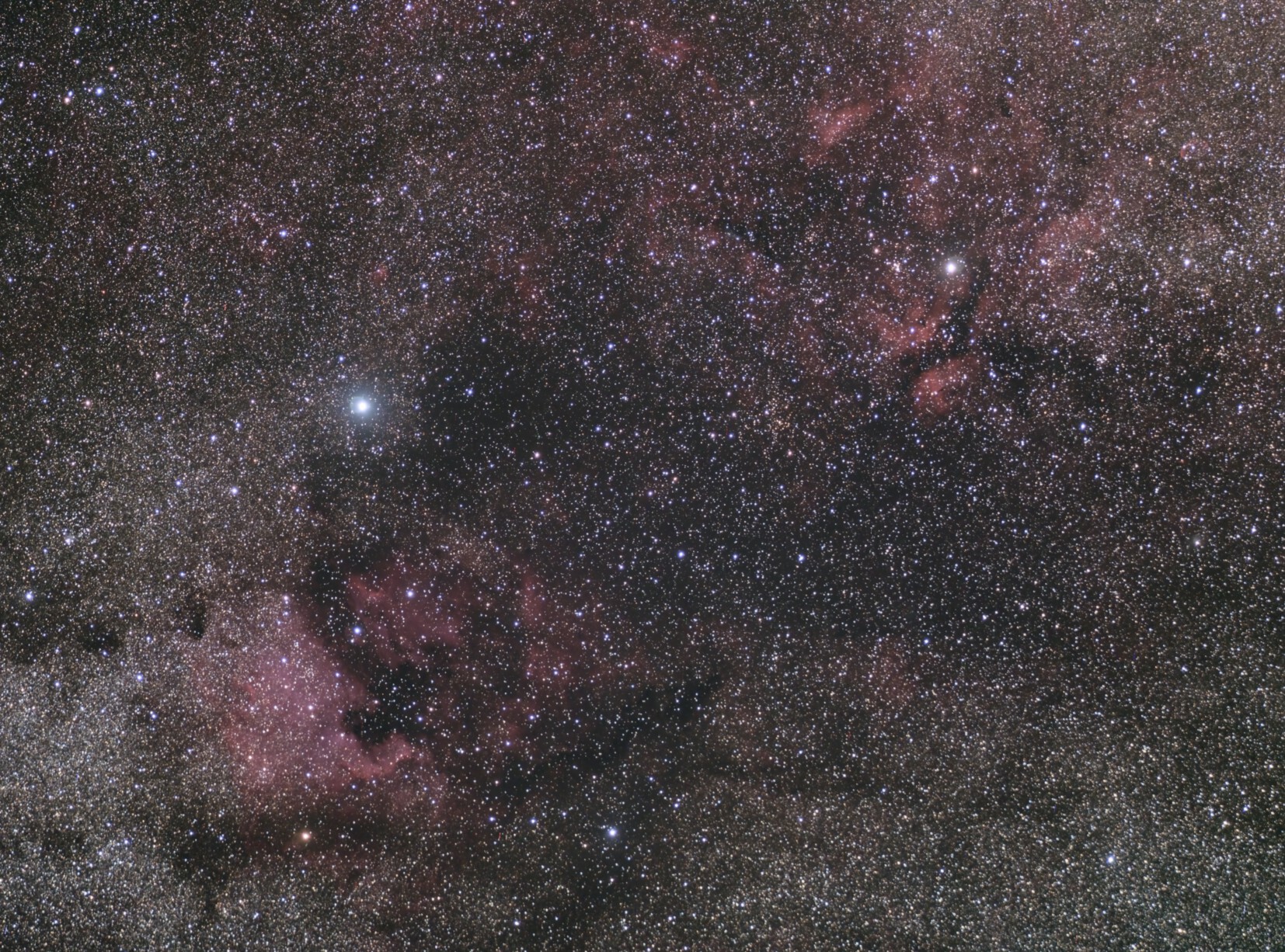 Once that had completed I moved the setup along the Milky Way towards Lacerta aiming for the dark nebula B168. The procedure was repeated and then, finally I moved to Auriga. By this time two things were apparent; 1) The skies were closing down and 2), after a week at work I was ready for bed so I cut this session short and headed for the van. Packing up with the Astrotrac consists simply of splitting it into parts small enough to fit in the van and stowing them in the cab in front of the seats.
Once that had completed I moved the setup along the Milky Way towards Lacerta aiming for the dark nebula B168. The procedure was repeated and then, finally I moved to Auriga. By this time two things were apparent; 1) The skies were closing down and 2), after a week at work I was ready for bed so I cut this session short and headed for the van. Packing up with the Astrotrac consists simply of splitting it into parts small enough to fit in the van and stowing them in the cab in front of the seats.
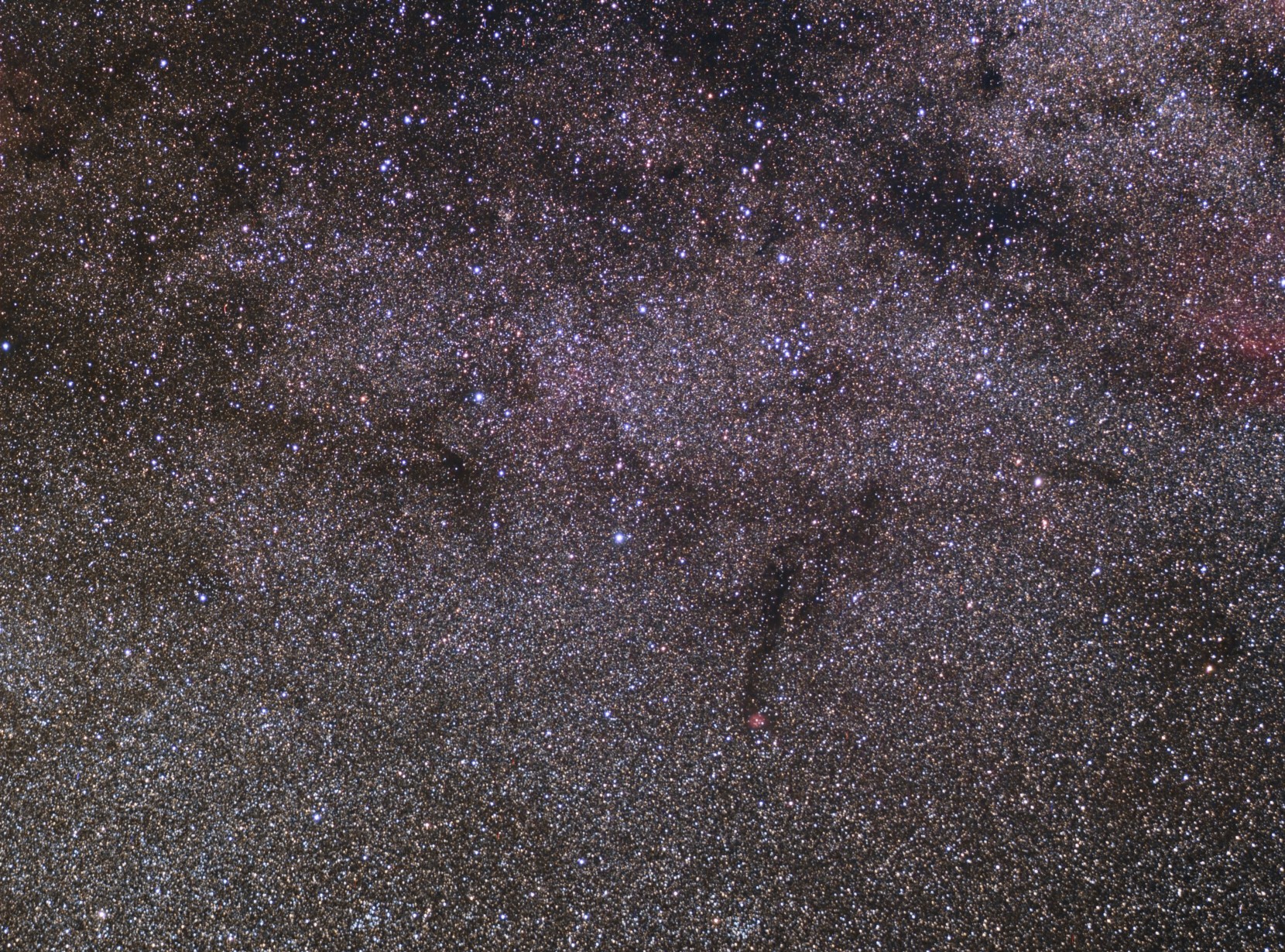 So, just one night of imaging this time but rather more hours than we got at Haw Wood. That’s just the way it goes.
So, just one night of imaging this time but rather more hours than we got at Haw Wood. That’s just the way it goes.
Sharpless 2-91
Approximately 20,000 years ago a star in Cygnus ended it’s life in a violent explosion. The shockwave from the blast started travelling outwards and what we’re left is the remnant SNR 065.2+05.7. The intervening time has the remnant spanning about 70 parsec and subsequently it’s very faint.
This is my second attempt at one of the brighter filaments of this structure, Sharpless 2/91 and comprises 6 hours of 10 minute exposures. It’s reproduced here at 80% of the original image size.
Lynd’s Bright nebula 534
I attempted this object last year using the Zenithstar 70mm and resolved to make another attempt with more exposure and a darker sky. This year I’ve assembled a lot more exposure time (8 hours in 10 minute sub-frames) over several evenings using the Baby-Q. The location is still my garden though so I didn’t manage to find darker skies.
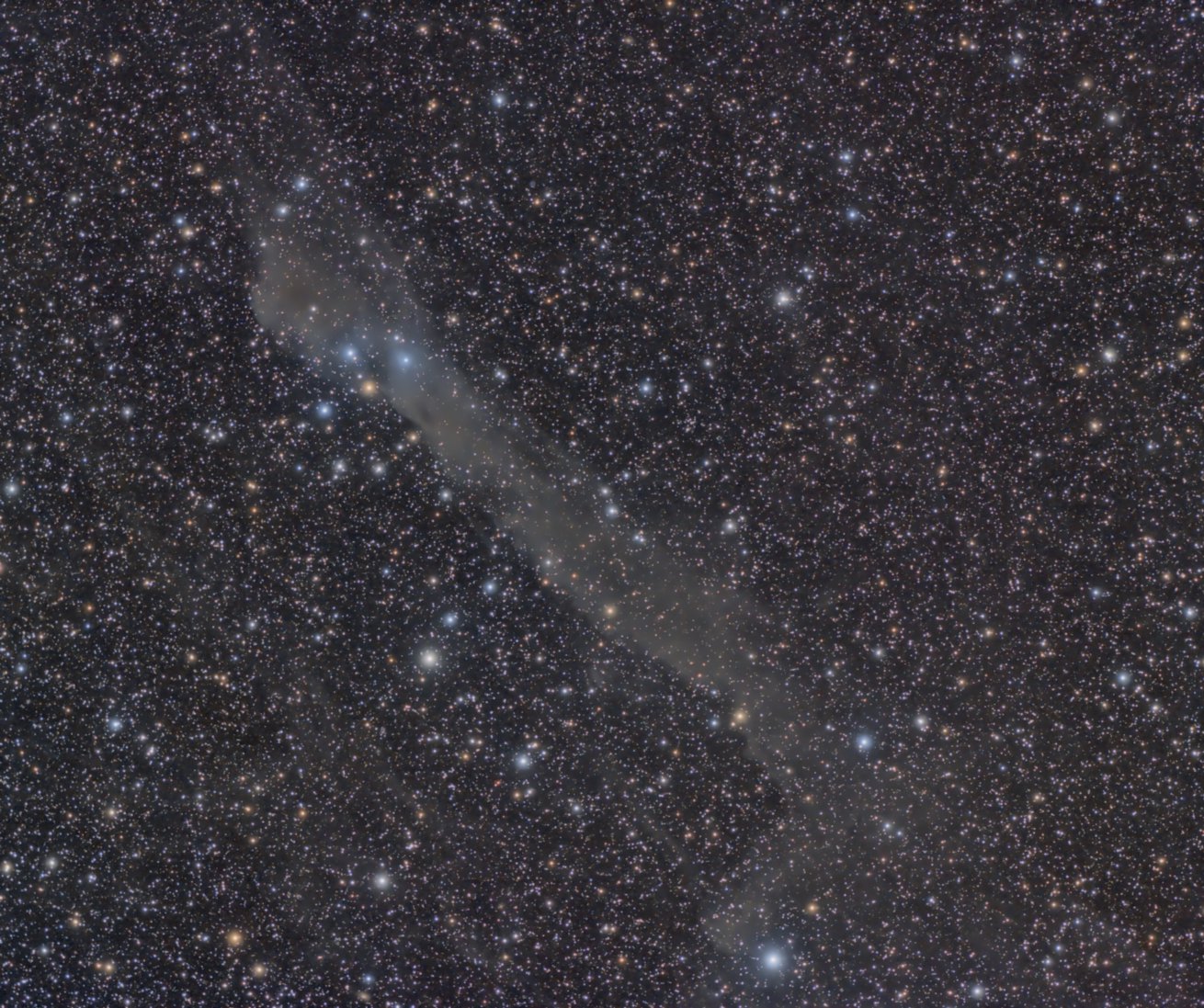 This time I’ve managed to capture more colour in the stars. In addition to the main nebula there are also fainter dust clouds visible in the image this time.
This time I’ve managed to capture more colour in the stars. In addition to the main nebula there are also fainter dust clouds visible in the image this time.
M4
It’s been a while since I posted here. A good part of that has been the summer weather and general lack of night time at UK latitudes. I’ve also has an observatory build project running which has consumed time but is now nearing completion.
My last post mentioned the globular cluster M4 in Scorpius. M4 never gets very high from the UK and the window of opportunity for taking pictures is really small; really limited to just one new moon period in early summer. The southern horizon at Suffolk was exceptional and whilst scanning the sky with binoculars I noticed that this object was looking as good as I’ve ever seen it from the UK. Due to an oversight when parking the van and setting up the telescope I had the onsite wind turbine directly to the south so had to wait a short while for M4 to clear this and then took 3 10 minute exposures.
With M4 only 10 degrees above the horizon light pollution is normally a big problem and when looking at these images it did appear that I had a sizeable gradient across the image. However, further processing revealed that this is the due to the reflection nebula around Antares (just out of frame) and not the more usual sodium lighting.
…and the AirMass (Relative optical path length through atmosphere) at 10 degrees altitude? 5.1.

